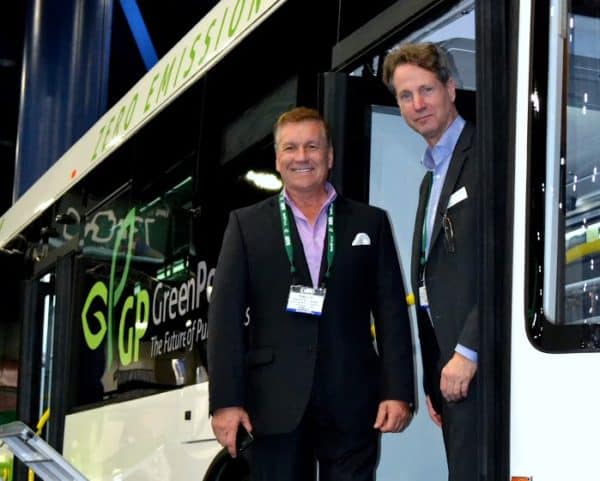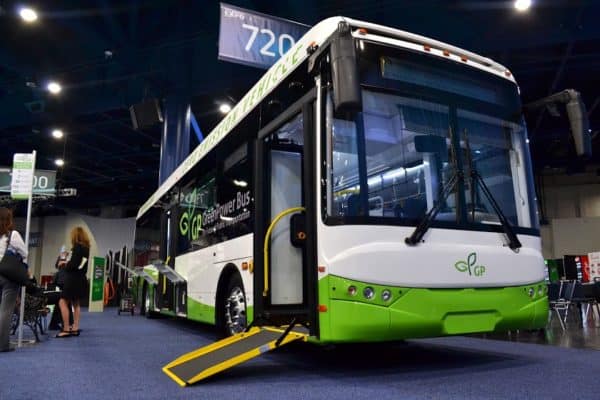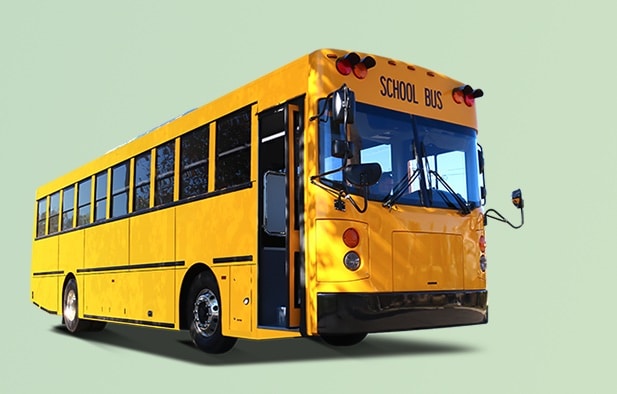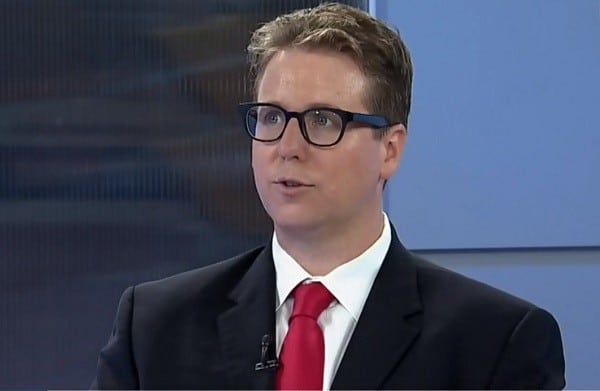GreenPower Motor Company Chairman Fraser Atkinson talks to Cantech Letter


Economic sense, environmental sense. Are the two simply parallel lines? In the wake of B.C. Transit’s decision to ditch Whistler’s splashy hydrogen bus fleet at a fraction of its original cost, naysayers might feel emboldened in arguing for the affirmative.
But the real answer is that alternative energy solutions are challenging their legacy incumbents across the board because advances are accelerating. A newer generation of companies is forming with the aim of not simply filling the demand created by corporate greenwashing, but to supply environmentally friendly options that don’t break the bank.
Formed just four years ago and newly public, Vancouver-based GreenPower Motor Company (GreenPower Motor Company Stock Quote, Chart, News: TSXV:GPV) believes it has a solution that checks both the environmental and economic boxes. The company’s recently launched EV350 bus costs more than a diesel offering, but with a battery that boasts a range of 280 kilometres it can handle an entire day’s work on a single charge, saving fleet operators about $50,000 a year.
Cantech Letter sat down with GreenPower Motor Chairman Fraser Atkinson to talk about the company’s ambitious plans.
Fraser, let’s start with the $64,000 question: is the timing right for an alternative energy bus?
Yes, I believe the timing is perfect. Four years ago batteries cost over three times their cost today, the capabilities of the battery technology have improved dramatically such that GreenPower’s bus can handle a typical transit route on a single charge along with a battery management system which ensures that the power supply is consistent and reliable. Combine this with operating savings, even at today’s lower oil prices, which make the GreenPower bus more economical than a traditional diesel bus over a 12 year economic life cycle. Finally, the United States is mandating changes such that significant grants are available to purchase electric vehicles. For example the Federal Aviation Administration (FAA) has recently launched its zero emissions airport vehicle and infrastructure pilot program for the acquisition and operation of zero emissions vehicles (ZEVs). The program provides a 50% grant of the total program costs associated with purchasing and operating an all electric vehicle for use at airports in the United States. This is a significant event and a great opportunity for GreenPower.
What is your take on BC Transit’s decision to sell-off its $90 million hydrogen bus fleet and replace them with diesel buses? How does this help or hurt your sales and marketing strategy?
Our understanding of this venture is that it just didn’t make economic sense to operate the hydrogen powered buses and hence the decision to terminate the program. In addition, a hydrogen bus cost about $2.1 million; or, four times the price of a diesel bus. This is a classic example where the initial decision was based on a desire to purchase a “green” technology but once implemented the reality of the costs require a rethinking of that objective. We call this the “halo effect” where the initial decision to purchase the product makes the purchaser feel good about themselves, but it ignores the economics of deploying that product. Whereas our sales strategy is to position the economic returns that GreenPower’s bus can deliver over a traditional diesel bus. In our case, the “halo effect” becomes the bonus not the driver of the sale.
We’ve structured the company in this way to maintain a very low cost structure such that our break-even sales point is four buses in the next year. And, any sales over and above that point should generate a profit.
GreenPower Motor Company was founded in 2010. How have you managed to accomplish so much in such a short period of time?
We have a great team and that’s why we’ve accomplished a lot in the past four years. During that time we’ve developed a great product, the EV350, which is FMVSS (Federal Motor Vehicle Safety Standards) compliant so we can sell our EV350 to anyone in the United States. And, we decided to assemble the major components of the EV350 from global suppliers including Siemens, Knorr, ZF, and Parker at Fengtai’s world class facility in China. We’ve structured the company in this way to maintain a very low cost structure such that our break-even sales point is four buses in the next year. And, any sales over and above that point should generate a profit.
Let’s talk about the bus. Could you please highlight some of the key features and specifications for our readers?
The 2015 model of the EV350 has a seating plan of 40 + 1 with space for one wheelchair area, 320 kWh of batteries and has a stated range of 280 kilometres on a single charge at the regular duty setting of our proprietary FlexPower System. Our selling price is between $825,000 and $895,000 which is only 30% higher than the selling price of a traditional diesel bus. Our estimated savings on the annual operating costs of over $50,000 makes up for the higher up front cost.
The EV350 design has a monocoque body with a stainless steel chassis, our own battery management system, a proprietary Flex Power system for the drive motors, integrating global suppliers with key components such as Siemens for the two drive motors, Knorr for the brakes, ZF for the axles and Parker for the dash and control systems. This OEM design allows GreenPower to build a bus that meets the specifications of the operator as well as using standard parts for ease of maintenance and accessibility for warranty requirements. We are also the only all electric bus with no heavy battery storage or battery charging systems on the roof of the bus.
Using a single charging station setup with 440 volts / 200 amps the charging time is a little over 4 hours. The battery charging station, which can be configured to charge more than one bus at a time, costs roughly $50,000.

How does the EV350 stack up against the competition?
There are three short range all electric 12 meter buses offered by Proterra, New Flyer and Nova. The last two companies are significant players in the traditional diesel bus market. A short range all electric bus requires an expensive overhead charging system, fixed infrastructure and goes as little as 10 to 15 miles on a single charge – so we are really comparing apples to oranges here. While there are markets for the short range all electric bus, the majority of transit routes are best served with a long range electric bus.
There are only two long range all electric 12 meter buses available in the United States by BYD and GreenPower. The published minimum range by BYD is 250 kilometres on a single charge. In comparison, the 2015 model of our EV350 bus has a minimum range of 280 kilometres on a single charge at the regular duty setting of our proprietary FlexPower System. Operating at the economy setting would reduce the horsepower by 40% while increasing the range of the EV350 to roughly 400 kilometres on a single charge.
There are a number of advantages that the EV350 has over BYD – and in many cases all of the electric buses. There are no batteries on the roof as the majority of batteries are placed between the axles on the EV350; which is the same approach as Tesla by the way. Besides being safer this lowers the center of gravity providing better handling and a smoother driving experience. Our FlexPower System allows an operator to adjust the power settings on the fly to maximize range and power as required. BYD has two motor options so the operator has a fixed system. GreenPower has two Siemens drive motors in the rear axle whereas BYD has in-wheel motors. In the design department, the EV350 has a monocoque body with a stainless steel chassis compared to a retrofit design and body bolted on a chassis.
The transit industry in North America absorbs almost 7,000 new buses each year – it’s a multibillion dollar a year business. Plus, we also have opportunities with universities and the shuttle bus industry: airports, theme parks and cruise ship terminals.
How big is the North American market on an annual basis?
The transit industry in North America absorbs almost 7,000 new buses each year – it’s a multibillion dollar a year business. Plus, we also have opportunities with universities and the shuttle bus industry: airports, theme parks and cruise ship terminals. The EV350 can be easily configured for a particular application whether it’s for use on a transit route, shuttle operations or at a university. Recently, GreenPower signed a Letter of Intent with AMC Transportation Services. AMC is based in Orlando, Florida and offers a broad range of transportation services. AMC has identified an opportunity to sell up to 17 EV350’s including: 7 EV350’s for shuttle operations at a theme park, 5 vehicles for shuttle operations with an entertainment company; and 5 vehicles for scheduled route services to a university based in Florida. To us, this demonstrates the range of potential buyers of the EV350.
On the manufacturing side, what is your estimated annual production capacity and what type of delivery lead time are we looking at here?
We are able to build one bus per day per line at Fengtai’s facility in China. Factoring in holidays and lead time between production runs this equates to about 250 buses per year per line with up to three lines for a total of 750 buses per year. It takes about four months to assemble the EV350 and then with final assembly, testing, and shipping the total time is approximately six months.
You just completed a reverse takeover and your first public financing, what’s next on the corporate development side for GreenPower Motor?
The team worked very hard to complete our reverse takeover and amalgamation between Oakmont and GreenPower. We also completed the first tranche of the private placement financing for gross proceeds of $3,032,500. Going forward, we intend to ramp up our sales and marketing efforts and we will look at additional sources of financing to fund our growth. It’s an exciting time for GreenPower and we are certainly looking forward to 2015.
GreenPower Motor Company’s Electric EV350 Public Transit Bus Tour from GreenPower on Vimeo.
Disclosure: GreenPower Motor Company is an annual sponsor of Cantech Letter. To learn more about the company click here.
Nick Waddell
Founder of Cantech Letter
Cantech Letter founder and editor Nick Waddell has lived in five Canadian provinces and is proud of his country's often overlooked contributions to the world of science and technology. Waddell takes a regular shift on the Canadian media circuit, making appearances on CTV, CBC and BNN, and contributing to publications such as Canadian Business and Business Insider.


